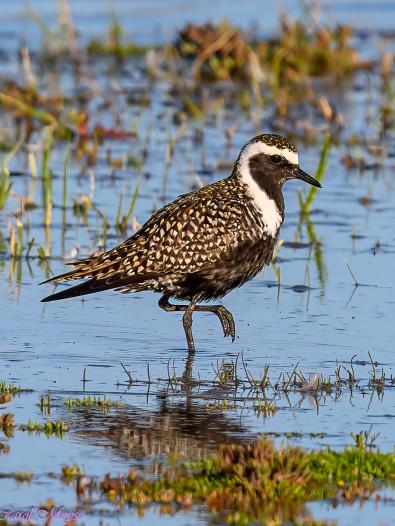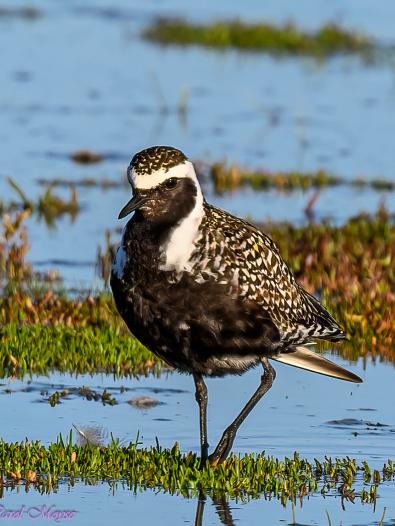
Golden find brings Victorian-first at Western Treatment Plant
In a ‘mega rarity’, an American Golden Plover has taken up residence at Melbourne Water’s Western Treatment Plant (WTP).
A long way from its usual breeding ground of the Alaskan tundra, the shorebird’s stunning breeding plumage has caught the eye of many bird-watching enthusiasts who have flocked to Werribee in recent days.
A ‘mega rarity’ is bird-watching slang for ‘very rare bird’. This is the first time the American Golden Plover has been recorded in Victoria and only the sixth time it’s been officially sighted in Australia.

“Every year the WTP plays host to a variety of shorebirds that migrate from their breeding grounds in the Northern Hemisphere, like Siberia and Alaska and journey down the ‘East-Asian Australasian Flyway’ to spend the spring and summer feeding and roosting at WTP,” Western Treatment Plant Conservation and Land Officer, Cody McCormack said.
“Occasionally a bird on a separate migratory path, such as this American Golden Plover, will become lost and make its way down to Australia.”
The American Golden Plover’s migration path is between Alaska and South American grasslands in Argentina, Uruguay, and southern Brazil.
“It’s hard to determine exactly how it made its way to WTP, but the most plausible theory is the bird moved from western Alaska into Siberia and then made its journey southwards – eventually arriving at WTP. Potentially, this American Golden Plover joined with a flock of Pacific Golden Plover – a similar species which uses the East-Asian Australasian Flyway and is recorded most years at WTP.”
This sighting comes ahead of World Migratory Bird Day on 11 May. This year’s focus is on the importance of insects for migratory birds, and highlight concerns related to decreasing populations of insects.
The nutrient-rich water released into Port Phillip Bay after going through the treatment process feeds the organisms in the sand which attracts the migratory shorebirds as a plentiful food source and in this case, is readying the American Golden Plover for its next long-haul flight.

“Given the bird is looking healthy and in its full breeding colours, it seems to be gearing up to attempt a migration back up north to begin the breeding season,” said McCormack.
“Although in a foreign country, given the migratory route is of about the same length and trajectory as its normal migration through the Americas, there is hope the bird will be able to make its way back home.”
The Western Treatment Plant receives about half of Melbourne’s sewage, providing an essential service that protects public health as well as our waterways and Port Phillip Bay.
The Western Treatment Plant’s variety of natural habitats provide a refuge for wildlife, including some of the world’s rarest bird and frog species – such as the critically-endangered, orange-bellied parrot and growling grass frog. The orange-bellied parrots have started to arrive from Tasmania.
Small group tours and birdwatching permits are available at the Western Treatment Plant.
For more information on birdwatching, visit birdwatching at the Western Treatment Plant.
For more information about the day, visit World Migratory Bird Day.
Media contact: